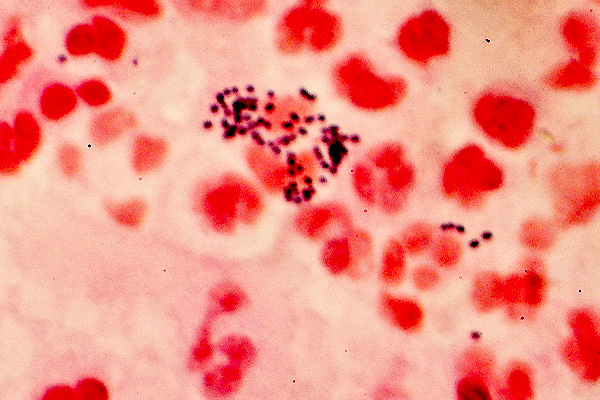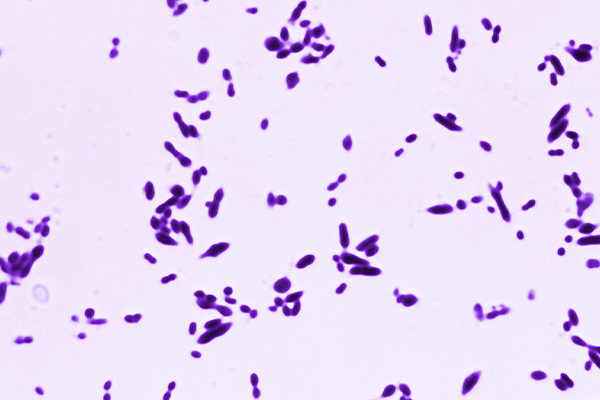The Gram stain is a fundamental part of the demonstration and classification of bacteria. Although it has been used for over a hundred years, its mechanism has been the subject of almost continuous disagreement. The disagreements revolve around the explanations as to why some bacteria retain the methyl violet and others do not; and what the relationship is between the dye, trapping agent, bacterial cell wall and bacterial cell contents.
The more commonly held theory said that the crystal violet bonded to bacterial nucleic acid, often specifically identified as magnesium ribonucleate. When the iodine is added, an unspecified compound is formed between the three components which resists dissolution in solvents. Application of a solvent therefore removes dye from the tissues in general, but leaves this complex within the organism.
The less well accepted explanation has the dye bonding to acid components in the bacterial cell, as basic dyes would do. The addition of iodine causes the dye to form a complex with it which has a molecule larger than the spaces within the bacterial cell wall. When a solvent is applied the complex dissolves, but is physically restrained from passing through the cell wall because of its size. Thus the organism is stained when the rest of the tissue is decolourized.
Popescu and Doyle extended the explanations considerably. They explain that the dye and iodine form a complex within the bacterial cell without any reference to the chemical composition of the cell contents. When the solvent is applied, the complex dissolves but is retained within the cell of thick walled bacteria. The thick cell wall resists damage from the solvent, retaining the dye. Gram negative bacteria, with thinner cell walls, do not resist damage so well as do Gram positive organisms, consequently the dye is removed. They note that Gram positive bacteria have cell walls 10-15 times thicker than Gram negative organisms. They also comment that organisms can be Gram negative not only because the cell walls are easily damaged, but also because the cell wall may be so very thick that it inhibits the crystal violet from entering in the first place.
References
- Popescu, A., Doyle, RJ., (1996)
The Gram Stain after More than a Century
Biotechnic & Histochemistry, v.71, No.3, pp.145








